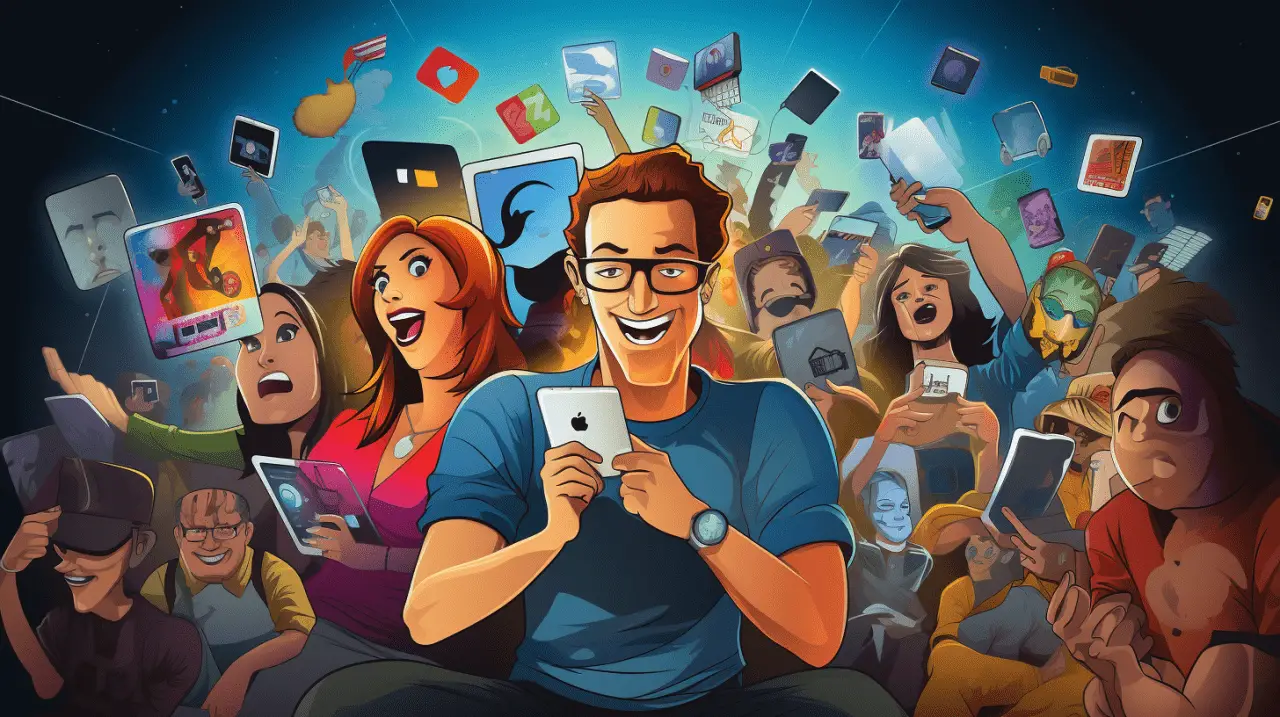In today’s digital age, the line between traditional media and user-generated content (UGC) is increasingly blurred. The proliferation of social media platforms has empowered individuals to become content creators, influencing mainstream media stories in profound ways. This article delves into how UGC shapes mainstream media narratives, illustrated through recent case studies.
Understanding User-Generated Content
User-generated content refers to any form of media that is created by users rather than professional journalists or media organizations. This includes social media posts, videos, images, blogs, and reviews. UGC has democratized content creation, allowing anyone with an internet connection to contribute to the media landscape.
Case Study 1: The 2020 Black Lives Matter Protests
Social Media as a Catalyst
The Black Lives Matter (BLM) protests in 2020, sparked by the killing of George Floyd, exemplify the powerful impact of UGC on mainstream media. Videos of Floyd’s death, recorded by bystanders, quickly went viral on platforms like Twitter, Instagram, and TikTok. These videos provided real-time, raw footage that traditional media outlets struggled to match.
Mainstream Media Response
Mainstream media’s coverage of the BLM protests was significantly influenced by UGC. The viral videos not only accelerated the spread of information but also shaped the narrative around police brutality and racial injustice. News organizations frequently cited social media posts and videos in their reports, and the visuals became key components of their coverage.
Impact on Public Perception
The user-generated videos galvanized public opinion and increased pressure on policymakers. The immediacy and authenticity of UGC helped to mobilize protests and generate widespread support for the movement, illustrating how citizen journalism can directly impact social change.
Case Study 2: The 2022 Will Smith-Oscars Incident
A Viral Moment
At the 2022 Academy Awards, actor Will Smith slapped comedian Chris Rock on stage after a joke about Smith’s wife. The incident was widely covered by mainstream media, but the initial footage that circulated was largely from attendees’ smartphones. Social media platforms were flooded with various angles and perspectives of the altercation.
Role of User-Generated Content
UGC played a crucial role in how the story evolved. Different angles and commentary from attendees provided a fuller picture of the event, influencing the narrative in ways traditional media coverage alone could not. The rapid dissemination of multiple perspectives prompted a flurry of discussions and debates online, which mainstream media outlets had to address.
Shaping Media Coverage
The abundance of UGC allowed media outlets to offer a more nuanced narrative, incorporating diverse viewpoints and reactions. This phenomenon illustrates how user-generated content can enhance and sometimes complicate the storytelling process for mainstream media.
Case Study 3: The 2023 Maui Wildfires
Real-Time Reporting
During the 2023 wildfires in Maui, UGC played a significant role in reporting and visualizing the crisis. Residents and tourists shared real-time updates, images, and videos of the devastation on social media. This on-the-ground content provided crucial information that traditional media used to supplement their coverage.
Influence on Mainstream Media
Mainstream media leveraged UGC to provide more comprehensive reports, often featuring firsthand accounts and dramatic visuals. The immediacy of UGC helped to bring global attention to the disaster and facilitated faster humanitarian responses. The media’s reliance on this content underscored the value of real-time reporting in crisis situations.
Community and Relief Efforts
UGC also played a role in coordinating relief efforts. Social media posts about missing persons, donation drives, and volunteer opportunities helped mobilize aid more effectively than traditional media campaigns alone. This underscores how user-generated content can support and enhance emergency response efforts.
The Dual Nature of User-Generated Content
Advantages
- Authenticity: UGC often provides raw, unfiltered perspectives that traditional media may not capture.
- Speed: Social media enables rapid dissemination of information, especially during breaking news events.
- Diverse Perspectives: UGC offers multiple viewpoints, enriching the overall narrative and providing a more comprehensive view of events.
Challenges
- Accuracy: UGC can sometimes be misleading or inaccurate, leading to the spread of misinformation.
- Credibility: Without professional oversight, the credibility of user-generated content can be questionable.
- Ethical Concerns: The use of UGC raises ethical issues, including privacy concerns and the potential exploitation of distressing content.
